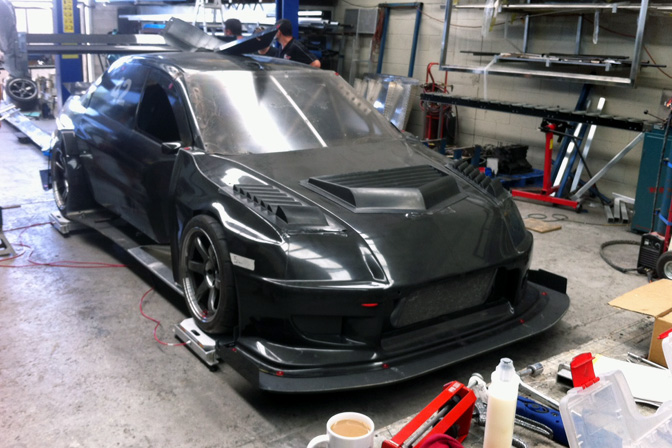Snrub said:
How effective do we think it would be to have a splitter at the front that was possibly a little lower than the rest of the flat bottomed car, with a gap for air to escape the engine bay and perhaps a gap all of the way along for the exhaust?
I also have trouble understanding how one would easily rivet, zeus fasten, etc. enogh to keep the flat bottom reasonably attached and rigid. Thoughts as to how this would be best accomplished?
In the first picture GameboyRMH posted, I'm guessing the cutouts are for a bit of potential heat to escape? I notice the panels go goes up in the middle towards the side of the car. Would there be any ramifications of this?
How does one ensure the diff doesn't overheat?
Don't make the front end lower than the rest of the car. Nothing should be lower than the middle section. If you made the front end lower, your center of downforce would be shifted far forward, and you'd probably get horrendous porpoising. The front of the flat bottom should be level with or higher than the middle.
For fastening, you can make brackets to tie into factory bumper or suspension mounting points at the front and rear. The middle is the harder part, you'd be lucky if you didn't have to do some fabrication work on the chassis to get enough attachment points there. You could install rivnuts to the chassis or maybe drill laterally through the seams near the jacking points and make brackets to meet them.
I thought those cutouts might be for cooling airflow to the exhaust, that makes sense for an X-pipe exhauist if you look at their positioning, it's just that the reverse-NACA shape is strange. Some quick searching suggests that a reverse NACA duct is a bad idea as they tend to expel air at a 90deg angle to the surface they're mounted to!
The middle section curving up to the sides is a packaging compromise and isn't aerodynamically ideal, ideally you'd want it to be perfectly flat.
To make sure the diff doesn't overheat, an onboard diff cooler getting air from a duct on the body of the car would be ideal, or you could just make a cutout for it and see what happens, at the cost of reduced underbody downforce.














































